
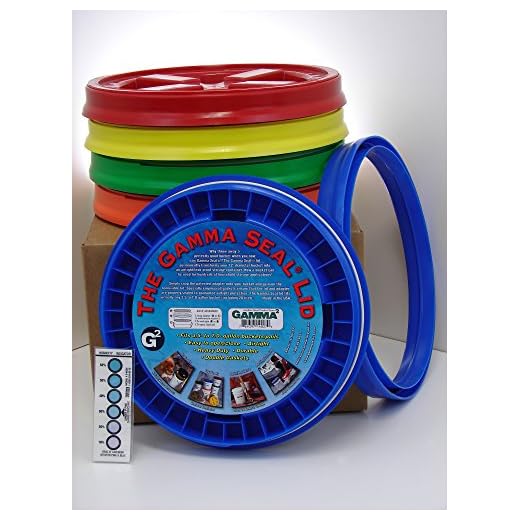

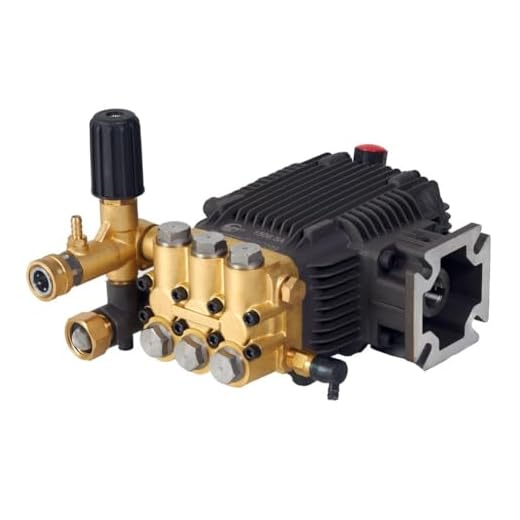
If you have a high-pressure cleaner and lack a direct water source, the solution lies in using a container filled with water. This method can be effective, provided you follow specific guidelines to ensure optimal performance. First, select a container that is large enough to hold sufficient water for your cleaning tasks, as most models require a minimum water supply to operate efficiently.
To connect your equipment to the container, you might need to use a suitable adapter or suction hose. Make sure the hose reaches the bottom of the container to avoid air intake, which can hinder functionality. Keep an eye on the water level, as running the cleaner with insufficient water can damage the motor or pump.
Additionally, consider the type of detergent used. If you plan to utilise a cleaning solution, check if your model allows for the integration of detergents while drawing water from a container. Some devices have built-in tanks for this purpose, while others require pre-mixing the solution in the water container.
Finally, always refer to the manufacturer’s guidelines for capacity and usage limitations. Following these steps will ensure your high-pressure cleaner operates effectively, even without a traditional water supply.
Effective Utilisation of a Pressure Cleaner with a Container
Using a container to supply a cleaning device is feasible, provided certain conditions are met. A common limitation you may encounter is the lack of adequate suction power depending on the design of your machine. Many models are engineered to draw water directly from a mains supply, hence a direct feed may enhance performance significantly.
An important factor to consider is the height of the water in the container. It’s crucial that there’s enough liquid to maintain a consistent flow rate. If the liquid level drops too low, it can cause cavitation–a situation where the pump loses its prime, leading to potential damage.
I recommend using a submersible pump to ensure optimal water intake. This setup allows for a steady supply, especially in lower containers. You should always verify compatibility; not every unit is designed to accept an external water source without modifications that could void warranties.
It’s also wise to check the filter system of your device. If the water supply comes from a tank or bucket, debris can enter and clog the intake filter. Regular maintenance of this component is necessary to keep the machinery running smoothly.
In my decade-long experience in the cleaning equipment industry, I’ve found that utilising a siphon setup can be beneficial. Ensure that the inlet hose remains submerged, facilitating smoother operation. Additionally, inspect for any leaks in your connection points to avoid efficiency losses.
Using additives like cleaners or detergents may work, but be cautious. Always consult the manufacturer’s guidelines to avoid using substances that could damage the device or affect its performance adversely.
In conclusion, while it is entirely possible to use a cleaning device with a container, understanding the technical specifications and limitations is crucial for achieving effective results.
Understanding the Water Source Requirements for Pressure Cleaners
The effectiveness of cleaning devices heavily relies on a stable and adequate water supply. For optimal operation, I recommend ensuring a minimum water flow rate of around 3 to 5 gallons per minute (GPM). This ensures that the machine can draw sufficient fluid for its high-pressure functions.
When sourcing from a container, it’s crucial to maintain a consistent water level to prevent the equipment from drawing air. Installing a filter on the intake hose can help safeguard against debris that may be present in non-standard water sources.
Water Pressure Considerations
A water pressure of approximately 20 to 100 psi is generally required for efficient usage. If the water supply lacks pressure, such as from a bucket, consider using a submersible pump to ensure adequate flow. This can significantly enhance performance when not connected to a direct plumbing line.
Temperature and Quality of Water
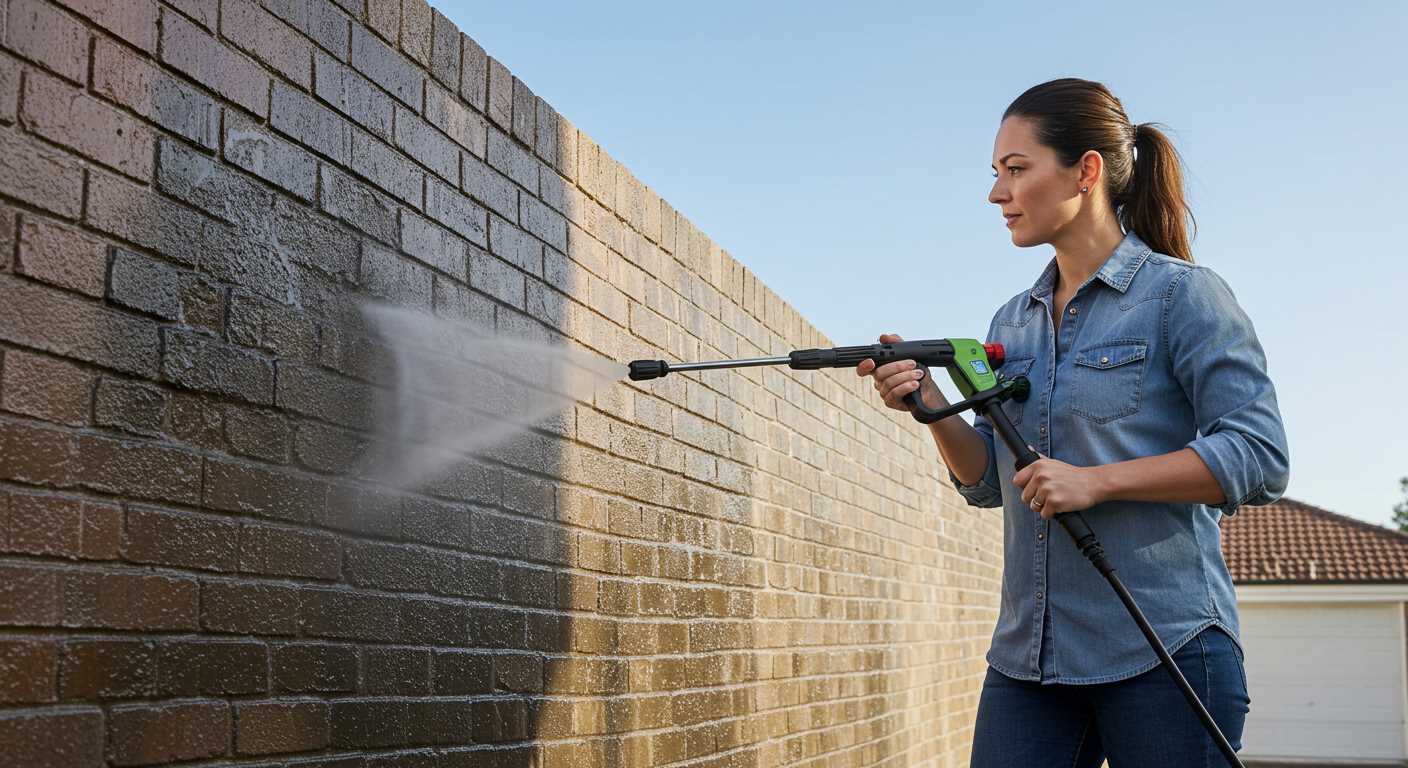
Utilising water that is too hot can damage seals and other components. It’s advisable to stick to cold or lukewarm water, ideally below 60°C. Additionally, avoid using chemical-laden water, which could corrode internal mechanisms.
Preparing a Bucket Setup for Your Cleaning Equipment

To create an efficient system using a portable water container, a few essential steps are necessary. Begin by selecting a container with sufficient capacity–at least 5 gallons is ideal for extended use without frequent refills. A larger vessel reduces the risk of running dry too quickly.
Choosing Your Container
Plastic containers are lightweight, though a rigid metal can offer improved durability. Ensure the container has an opening large enough to accommodate the intake hose. Additionally, a lid can prevent debris from contaminating your water supply.
Connecting the Equipment
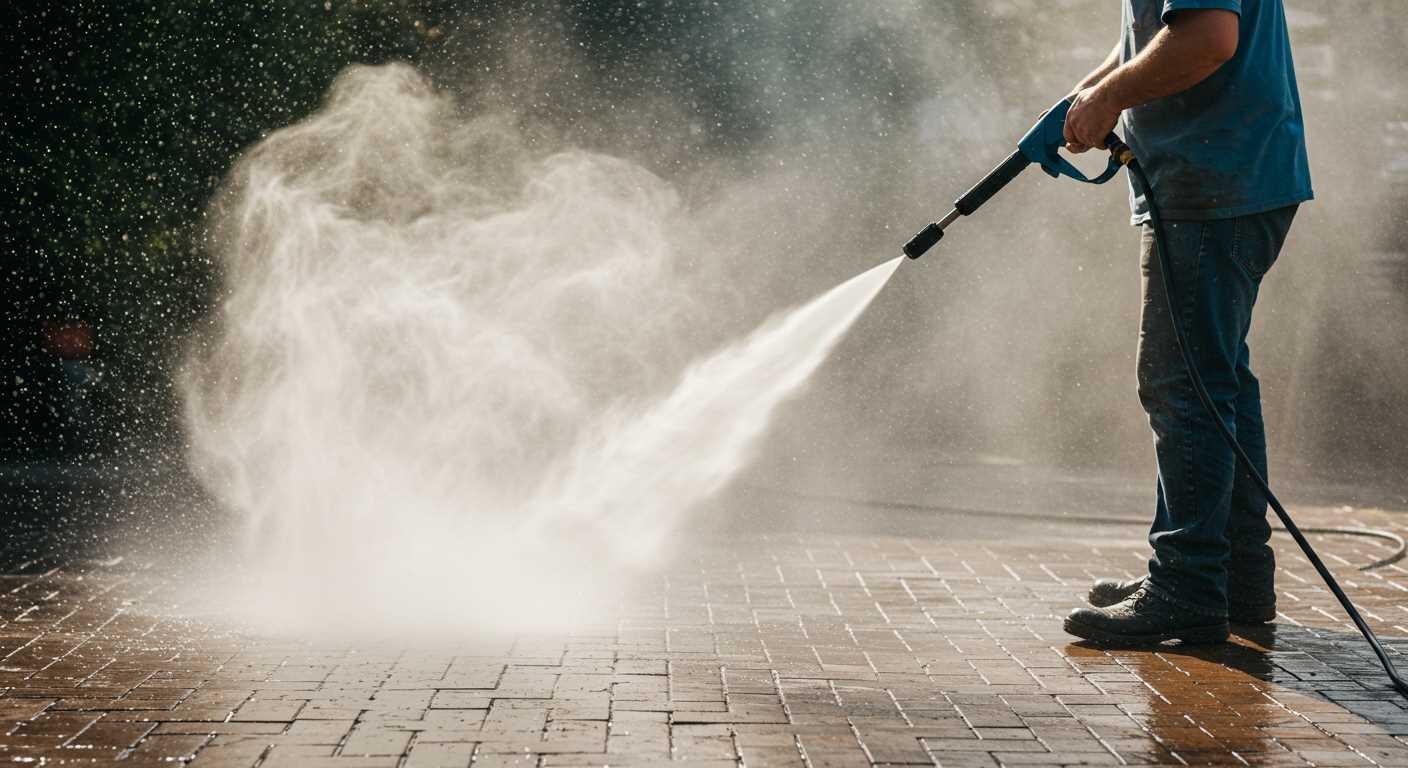
Attach a suitable hose directly to the inlet of your cleaning device. The hose should be submerged into the container, ensuring it reaches the bottom for maximum water intake. Use a filter or a screen at the end of the hose to prevent debris from entering the system, which can lead to clogs and decreased performance.
Consider employing a weighted bag or stone to keep the hose submerged in larger containers, avoiding fluctuations in water levels. Additionally, check all connections for airtightness to maintain consistent suction and performance.
Regularly inspect the water quality, replacing it when necessary to prevent chemical buildup and maintain optimal cleaning results. By properly preparing the setup, operational efficiency improves significantly, allowing you to achieve the best possible outcome during your cleaning tasks.
Checking Compatibility of Your Pressure Washer Model
Review your owner’s manual for specifications regarding suction capabilities and water source requirements. Many brands provide clear guidelines on whether their units can draw water from containers.
Examine the inlet type of your cleaner. Some models feature a standard garden hose connection, while others may come with unique fittings. If necessary, acquire an adaptor to ensure compatibility with your container setup.
Consider the power rating of your unit. Models with lower psi ratings may handle surface cleaning but struggle with larger debris when not connected to a continuous water supply. Higher-rated units tend to maintain better performance levels under diverse conditions.
Analyze the pump design. Triplex pumps provide improved suction capabilities, enabling better functionality with bucket setups than axial pumps, which can be less efficient at drawing water.
Verify any warranty stipulations regarding water intake sources. Some manufacturers may void the warranty if their equipment is not used per specifications, highlighting the importance of compliance for long-term use.
Test your cleaner under a controlled scenario before undertaking extensive tasks. Fill the chosen container and observe the performance; if suction remains inadequate, adjustments or alternative configurations may be required.
Flow Rate Considerations When Using a Bucket
The flow rate of the water is a critical factor to assess when opting for a bucket setup. Most models require a minimum flow rate to function properly, typically measured in litres per minute (LPM). Ensuring your chosen container can deliver this amount is essential for avoiding operational issues.
I recommend using a bucket that has a capacity of at least 20 litres. This will generally allow for sufficient water supply without frequent refills. However, it’s important to consider the flow rate of the device; many units perform best with around 7-10 LPM. If your setup falls below this threshold, you might experience a loss in performance.
Another aspect to review is the height of the bucket. A taller bucket can create additional gravity-based pressure, aiding the flow to the unit. Positioning the container slightly above ground level can also reduce the chances of air getting into the system, which can cause interruptions.
Attach a quality hose with a diameter compatible with the inlet, preferably a half-inch, to maximise flow efficiency. A larger diameter hose allows for a higher volume of water to reach the machine, preventing any potential bottleneck.
Always monitor your water source closely. If the water levels drop too low, the equipment may struggle to draw enough liquid, leading to potential dry running, which can damage components. Regularly check that your bucket remains adequately filled throughout usage to maintain optimal conditions.
Additional Equipment Needed for Bucket Operation
To optimise performance while using a container, several accessories can enhance the setup. Here’s a list of recommended items.
- Submersible Pump: Incorporating a submersible pump allows for efficient water transfer, ensuring a consistent flow that meets the requirements of your device.
- Longer Hoses: Utilise longer hoses if the device’s reach needs to extend beyond the bucket’s location. This reduces the need for constant repositioning.
- Filter System: Installing a filter system can prevent debris from entering the equipment, which can cause clogs or damage over time.
- Adapter Fittings: Depending on the hose diameter, you might require various adapter fittings to ensure a secure connection between the container and the equipment.
- Sturdy Bucket: Opt for a heavy-duty bucket that won’t tip over easily during operation, maintaining stability and preventing spillage.
- Float Valve: A float valve can help regulate water levels in the bucket, ensuring the submersible pump functions without interruption.
Utilising these accessories can significantly improve the functionality of your container-based setup, allowing for a more efficient cleaning process.
Exploring Limitations of Using a Bucket with a Pressure Washer
Using a container to supply water for a washing device presents several drawbacks that one must thoroughly consider. The foremost issue lies in the capacity. A standard bucket typically holds only 5 gallons (19 litres) of water, which may be insufficient for extended cleaning tasks. Continuous operation can quickly deplete this supply, leading to interruptions during cleaning sessions.
Another significant concern involves suction. Many models require a consistent water source to maintain optimal performance. Using a container may hinder the unit’s ability to draw enough water, causing a drop in pressure and efficacy during use. If the water level in the bucket drops below a certain point, the machine may even run dry, risking pump damage.
Water Temperature and Quality
Temperature also poses limitations. Water in a bucket may not be warm enough for effective cleaning, particularly for tasks involving grease or grime. Cold water can compromise cleaning efficiency, as the mechanical action of the unit relies on optimal water temperature.
Operability and Logistics
- Mobility becomes an issue with a bucket setup. Each refill necessitates physical lifting, which can become tiresome and inconvenient, especially for larger areas.
- Fluctuations in water quality can also affect performance. If the water isn’t filtered, debris and particles may clog the inlet, decreasing functionality.
- Organising tools and hoses around a bucket may lead to a cluttered workspace, making the cleaning process less streamlined.
In conclusion, while utilising a container might seem feasible, the hindrances associated with water capacity, suction, temperature, and overall logistics can diminish the cleaning experience. A reliable water supply is essential for optimal operation, so planning ahead is key for successful outcomes. Consider alternatives that ensure a sustained flow for uninterrupted performance.
Troubleshooting Common Issues with Bucket Use
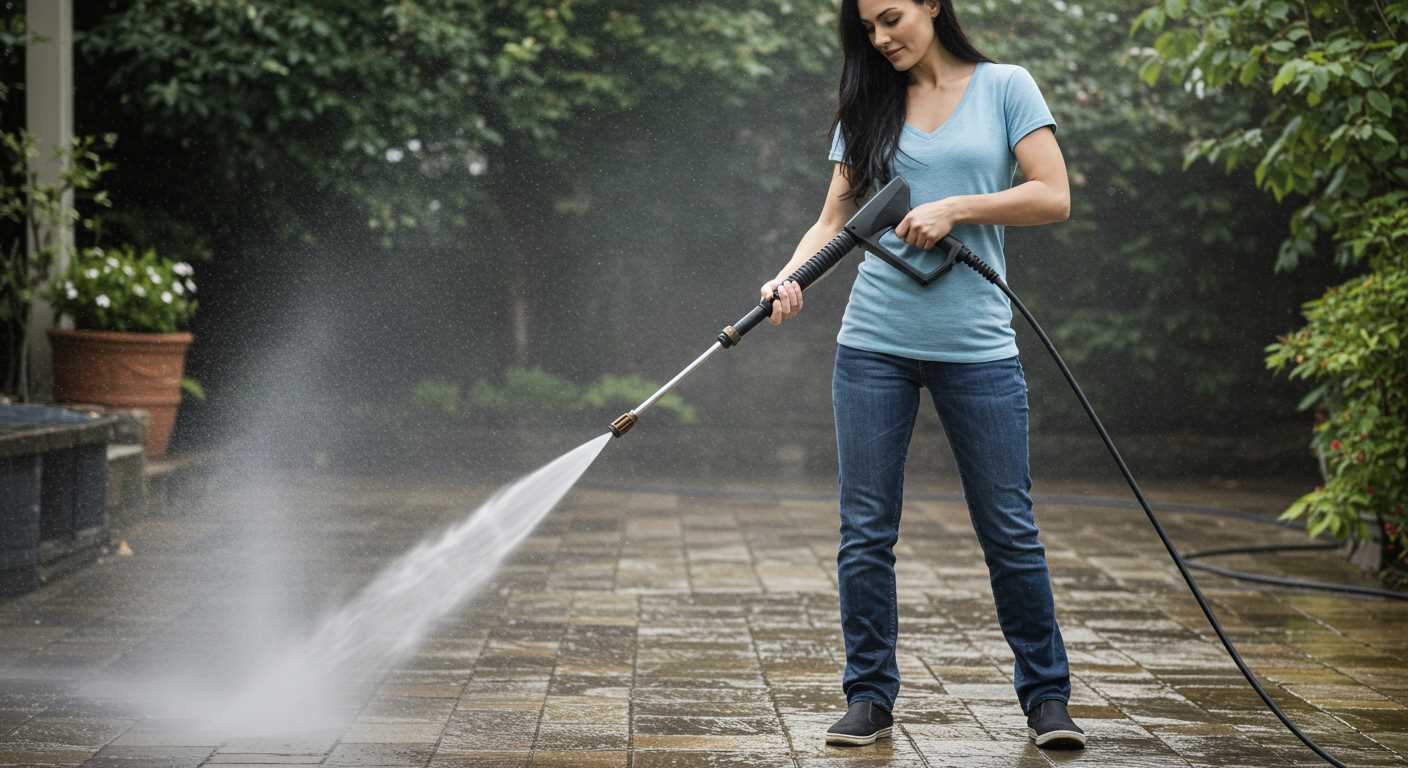
To address common challenges, first assess the suction issues. If the cleaning device struggles to pull water, ensure the inlet hose is submerged sufficiently and there are no air leaks. Adjusting the hose length can also help, ensuring it’s not too close to the bottom of the container, which may lead to drawing in sediment.
Low Pressure and Flow Problems
Experiencing low pressure? Check the filters and the spray gun for blockages. Clean or replace them as necessary. Additionally, examine the hose connections; loose fittings can lead to reduced performance. Using a slightly larger storage container can also help by allowing more water to be available for consistent suction.
Water Temperature Issues
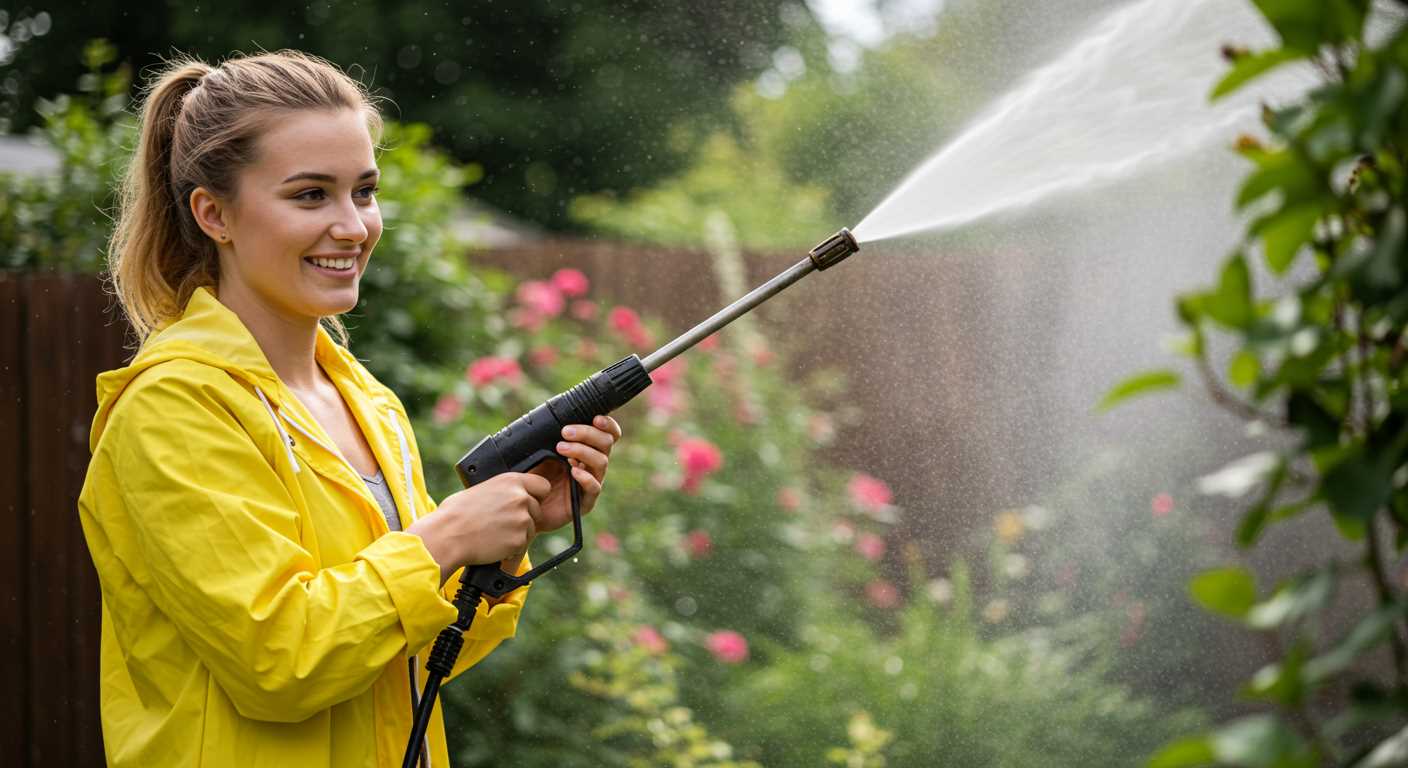
If the temperature of the liquid is an issue, remember that most equipment operates best with cold water. If you’re using hot water, it can lead to equipment malfunction. Always adhere to the manufacturer’s specifications regarding water temperatures to prevent damage.
| Issue | Solution |
|---|---|
| Suction Problems | Ensure inlet hose is submerged and check for air leaks. |
| Low Pressure | Inspect filters and connections for blockages or looseness. |
| Temperature Issues | Use cold water following guidelines provided by the manufacturer. |
Test your setup in various conditions to identify the most effective water source arrangement. Monitoring these common issues helps to ensure smooth operation and longevity of the equipment.







